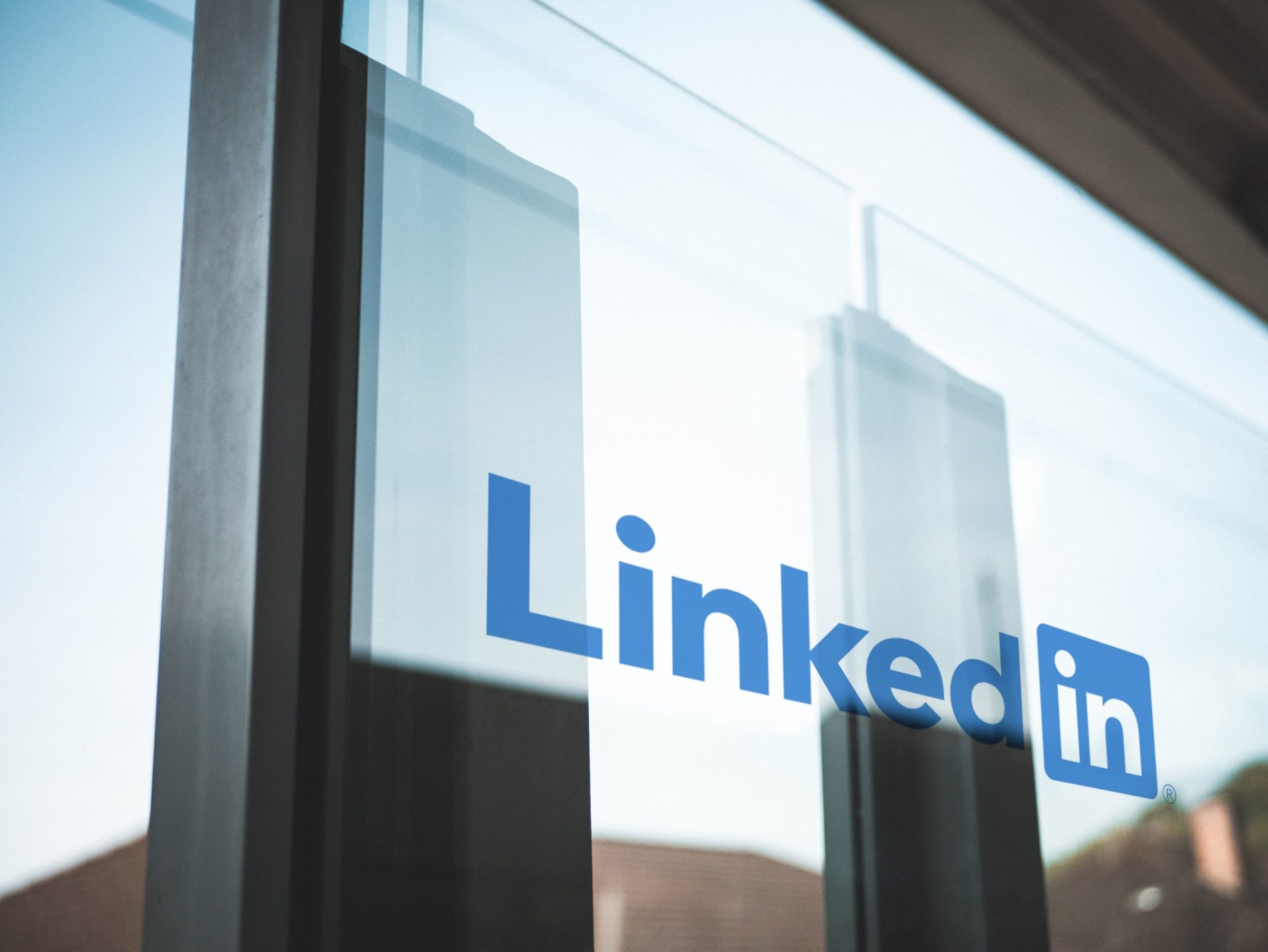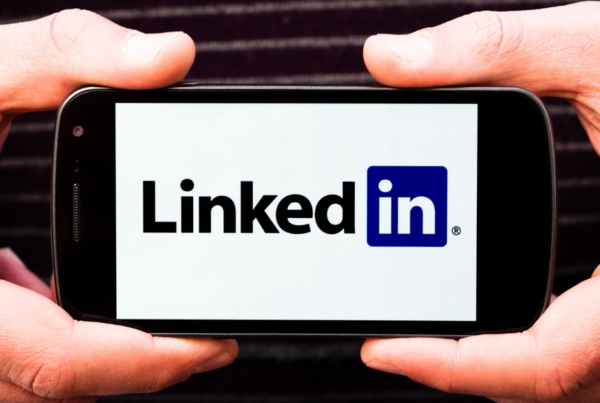Even if the “old ways” of site visits and conferences return, this new norm we are all experiencing will demand that sales professionals possess better digital selling skills and amplified personal branding.
Insights from LinkedIn Expert & Author Viveka von Rosen
By Tim Sweeney
C OVID times mean distant times, and for those charged with bringing in the revenue—yes, we are talking about salespeople, not marketers—this has ushered in the era of virtual (or remote) selling. While the days of loading up the station wagon and knocking on doors have long passed, sales teams were still in the practice of building relationships through in-person meetings and on-site visits. The inability to now meet face-to-face or even at conferences and trade shows over the past year has forced many sales professionals to adapt in order to survive. It has left a gap in the cycle of prospecting for new clients and maintaining existing relationships.
The New Normal
Thankfully, there are tools and ways to bridge that gap and areas where marketing can step up to help, which is where Viveka von Rosen comes in. An accomplished speaker and coach on the topic of digital transformation of selling, von Rosen joined us for a virtual sit-down (ironically enough) and dropped some wisdom about how pandemic 2020–2021 has changed B2B sales forever.
Even if the “old ways” of site visits and conferences return, this new norm we are all experiencing will demand that sales professionals possess better digital selling skills and amplified personal branding. Make no mistake: the sales arena has changed forever.
“Yes, there are online summits, but those face-to-face conferences are out for a while and, quite frankly, site visits are probably out too,” von Rosen says. “And many of your buyers are living at home, and they’re certainly not going to be comfortable with you coming to their house, so we have to learn how to do this new virtual and remote selling.”
Selling Through Content Creation
Often that remote selling now takes place on platforms such as Zoom, BlueJeans, Microsoft Office, or Microsoft Teams. Still, to get to that online meeting, sales professionals must now create a unique online presence—starting with a strong LinkedIn profile—and use content that is valued by sales targets to increase engagement with potential buyers. Sales pros, however, are not normally marketing pros, and that valued content has to come from somewhere. Von Rosen says it falls on marketers to create silos of content that lend themselves to individualized conversational opportunities for their sales teams. Moreover, they must keep this content up-to-date and make it readily accessible to their colleagues on the sales side.
“Content created for marketing is one to all,” von Rosen says. “It’s content that can be consumed on your website or on YouTube or in your LinkedIn, Twitter, Facebook, or Instagram feeds. That shifts a bit when you’re creating content for sales or sales enablement, which is when your sellers take that content and then hand deliver it directly to the buyer.”
“Content created for marketing is one to all,” von Rosen says. “That shifts a bit when you’re creating content for sales or sales enablement, which is when your sellers take that content and then hand deliver it directly to the buyer.”
According to von Rosen, this could be as simple as your sales rep taking a blog post and sending a LinkedIn message to a client, saying, “Hey, I know you asked this question in the webinar the other day, and I found this blog that we wrote about that topic. I thought you would be interested in it.” Or it could be a salesperson taping a one-to-one video using a tool such as Hippo Video, Videolicious, Loom, or BombBomb and including the assets that marketing has created.
Marketers Need to Support Sales People with Content Creation
Remember, though, that salespeople don’t always know where to go for that content. For marketers, that means it’s paramount that they develop and organize content for different buyer types and for the different products the company offers and serve it up to their sales teams in an organized and easily accessible way. That might mean delivering testimonials from someone at an insurance agency that your sales reps can take and share privately to a buyer via a platform such as LinkedIn, Twitter, Facebook, Instagram, or email.
“In many cases, you’ll be able to cross-reference many of these buyer types by product, industry, region, culture, and even gender in some cases,” von Rosen says. “We use a tool called EveryoneSocial, but other tools, like Seismic,
can also help.”
Before your marketers spend time creating up-to-date content that is tagged correctly and that your sellers can find, the first step is relying on your sales team to understand the needs of the buyer and his or her persona. And quite frankly, if you haven’t gone back and revisited your buyers and where they’re at since March, you need to do that. The people and the journey are likely to be different than they were a year ago. It’s not that they’re not trying to buy, but there’s confusion around what to do and you can no longer walk over to somebody’s desk or walk down the hall to a colleague’s office and say, “Hey, how do I get this done?” Now they have to hop on a video call or send an email or maybe engage with a project management platform to read ongoing conversations with the entire team—it’s definitely different now. You need to think about how to equip your sales team to navigate and understand this and that their buyers have experienced as much change as they themselves have.
Understanding What Has Changed
New challenges for sales teams
- Gaining a buyer’s attention
- Keeping buyers engaged virtually
- Finding content to share
- Building rapport and credibility with buyers virtually
- Access levels of those you can now reach
New challenges for buyers
- Decision-making roles (within their organization)
- Longer time for approvals or to make decisions
- Companies reorganizing; buyers not sure how to get things done now
- Conflicting information found when researching vendors/solutions online
- Sellers not providing value beyond research buyers can find online
New challenges for marketers
- Lack of bandwidth to create much-needed new content
- Managing shifting priorities
- Visibility into fluid plans
- Repurposing and redistribution of marketing assets
- Inability to effectively collaborate in real time
Focus on the Buyer Persona
“There needs to be a conversation between marketing and sales about what the buyer actually now needs and is interested in and what the buyer’s persona really is—as of today,” von Rosen says. “If it’s a miss, your sellers are never going to provide the marketing content to their buyers, because it’s not going to be relevant.” When you’re structuring your content—your content strategy, your nurture programs, the delivery, the handoff to the sales team—what are the questions and answers that are going on? Every piece of content should answer a question and then raise a new one. Once the buyer has that piece of information, what does he or she need to know next? No piece of content should be a dead end. It should continue the story and the conversation and lead them to what’s next.
From there, it’s up to your sales team members to use that content to cultivate relationships. Unfortunately, too many sales professionals are unaccustomed to social selling and, therefore, are handicapping their own efforts with weak personal branding online. If B2B is your arena, that means sprucing up your LinkedIn game is a must-do, especially in a pandemic-driven, remote-oriented world. And that’s where having great content comes in handy.
“Today, virtual selling is how you will likely talk to your buyers—initially, especially B2B buyers,” von Rosen says. “Know where your buyers are. They could be on Instagram, Facebook, or Twitter, and that’s fine. I work primarily with B2B companies or B2C companies that sell to B2C, so LinkedIn is absolutely where they need to be.”
The Rise of LinkedIn
Since March 2020, when much of the world began working from home, von Rosen’s clients have seen their LinkedIn profile views skyrocket. Unfortunately, many of their profiles were not ready for prime time. (See Viveka von Rosen’s seven tips for improving a LinkedIn profile.)
“Their profiles might not even say the name of the company that they currently work for, and if they do, it looks more like a résumé and job seeker,” von Rosen says. “They have no content and no branding. It’s a huge missed opportunity. It’s absolutely crucial that your sellers, especially B2B sellers, are using LinkedIn and that your company branding is really strong on their profiles, because that’s where your audience is.”
Once your profile is strong enough to be seen “in public,” it’s time to understand how to cultivate relationships through conversations, what von Rosen calls “social selling.” That can be harder than it might sound. For starters, don’t treat it like you’re reaching out to an old friend from high school on Facebook. Start by using the advanced search filters within LinkedIn to research whom you should be talking to and be sure to read the profile of the person you want to contact. Surprisingly, von Rosen says too many people simply skip this step. If you have connections in common, you can ask for an introduction before you invite someone to connect or you can mention the common connection in your direct “connect” request.

It’s absolutely crucial that your sellers, especially B2B sellers, are using LinkedIn and that your company branding is really strong on their profiles, because that’s where your audience is.
Earning the Right to Pitch
“Too many salespeople are inviting a person to connect and then following that with a sales pitch, but they haven’t earned the right to make such a pitch,” von Rosen says. “It shouldn’t be ‘Hey, my name is Viveka and you should totally buy my product!’ but that’s how people are using LinkedIn. If you don’t have a common connection, the best way to engage is through content. Engage with them on their content or point them in the direction of your own published content. Look for common ground that you share and can start a conversation with. So many sales reps are just jumping on LinkedIn and prospecting. You would never do this in real life. You would never come up to someone and say, ‘Hey, buy my stuff.’”
Once you are connected with your sales target—assuming it goes well—continue to feed your network with content that your marketing department has created in order to keep you top of mind with those buyers. Von Rosen cites speaker and author Bob Burg, who says, “All things being equal, people will do business with, and refer business to, those people they know, like, and trust.” A truer statement was never spoken.
What people really have to understand is that virtual selling and content creation is not going away with COVID.
How a Video Sales Call Differs from In-Person Conversations
Assuming you are able to put the tools von Rosen explained above to work for you, remember, too, that your “face-to-face” video sales call is different from a casual Zoom with colleagues and clients you already have relationships with. First, understand how you will present yourself on camera and get comfortable with the technology needed to make a good impression. Invest a few dollars in a light ring, a decent microphone, and earbuds that allow you to hear well rather than headphones that make you look like a DJ.
Marketers are also in the unique position to teach sellers how video can be used for effective private messages on LinkedIn and in emails. “I send a video message to everyone I connect to with links to additional resources,” says von Rosen. “We find that including resources has resulted in a 3x opening rate.” Von Rosen uses OneMob, but smaller companies could consider Hippo Video or Loom.
“Remember,” von Rosen says, “unless you are actually creating conversations with your prospects on LinkedIn, it’s not social selling, because you’re not actually selling.”
Live Video on LinkedIn
Continuing on the topic of video, LinkedIn has a fairly new live-video offering. LinkedIn Live was launched in 2019 and has had tremendous success driving engagement, bringing your professional community together safely in real time. Think of it as a fresh new channel for your existing content ideas and a way for marketing to help position sellers as experts, developing a strong, professional online presence.
You want it to be as professional as possible; think of it as a TV show—same time, same day every week to set the expectation. It gives people a great sense of who you are. You can talk about anything industry related, from any location. Von Rosen suggests 15 minutes to a half hour in length. Consider product showcases or virtual tours of your facility with a live Q&A. And when we are able to safely gather together, streaming live from events or interviewing a subject matter expert could be on your to-do list. You can also simultaneously stream to other platforms.
To ensure that LinkedIn Live is used in a professional manner, you must first apply and be approved to start streaming from your personal profile or your organization’s page. Google “LinkedIn Live” for guidelines and the application.
If selling from home—or at least over the digital airwaves—is taking some adjustment, stay the course, because virtual selling is not going away anytime soon. An online article from McKinsey & Company in October 2020 said that more than three-quarters of buyers and sellers now prefer digital self-serve and remote human engagement over face-to-face interactions because they have made it easier for buyers to get information, place orders, and arrange services. Only about 20 percent of B2B buyers intend to return to in-person sales, the article reports.
“What people really have to understand is that this is not going away like we hope COVID will,” von Rosen says. “Hopefully, the vaccine will take care of things and the pandemic will pass and we can all go hug our families and go on vacations again, but this virtual selling—selling via Zoom and selling via LinkedIn—this is absolutely here to stay.”







